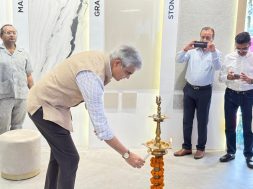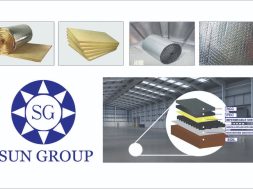
The leading experts in the field of architecture have shared their perspectives and shed light on the complexities of the transforming grounds of commercial architecture in India.
A remarkable transformation is underway in the dynamic landscape of India’s commercial architecture. Pioneering building projects are revolutionising the industry, seamlessly fusing contemporary design with functional excellence. The ultimate transformations showcase bold and innovative architectural perspectives and prioritise sustainable building practices, resulting in iconic landmarks that leave a lasting impression on residents and visitors alike.
Optimal functionality, flow, and user experience
According to Mr. Sanjay Bhardwaj, Partner of team 3 Architects, meticulous planning of vehicular movement is crucial for commercial buildings. These projects carefully segregate and plan for various modes of transportation, ensuring easy accessibility. Strategic placement of well-appointed lobbies, transfer elevators, and escalators, along with optimised elevator groupings, allows for efficient horizontal and vertical movements, considering peak traffic during different times of the day. Attention to detail enhances user experience and security, creating a sense of efficiency and convenience.
Founder & Partner of 42mm Architecture, Mr. Rudraksh Charan, emphasises efficient planning in commercial buildings. These buildings maximise their potential by prioritising value for money and offering multiple ways to utilise space. Consolidating services in one location minimises circulation, enabling large customisable floor plates that enhance the building’s salability and monetary value. The design also focuses on creating a sense of arrival and movement, incorporating spaces of rest or waiting and ensuring clear navigation, enhancing the overall experience and attracting more visitors.
Mr. Kapil Razdan, Founder & Architect of Arquite, highlights the significance of simplicity and adaptability in commercial buildings. These buildings adhere to transparency, flexibility, sustainability, and minimalism, balancing aesthetics and efficient resource utilisation. This approach allows the structures to adapt to changing needs while preserving core functionality. Additionally, it helps maintain cost-effectiveness in both construction and ongoing operation.
Materials for durability, aesthetics, and sustainability
Architects offer valuable insights on selecting materials and finishes for commercial buildings. Mr. Bhardwaj emphasises using natural materials such as stones, wood, and glass, along with well-designed shading devices in lightweight materials. This strategy enhances aesthetics, durability, and ease of maintenance.
Mr. Charan emphasises durability and minimal upkeep in commercial spaces. Designs that remain timeless and require minimal maintenance are preferred. Locally available and easy-to-install products such as laminates, full-body tiles, charcoal panels, stones, and gypsum panels are frequently used, offering practicality and aesthetic appeal.
Mr. Razdan highlights the critical role of materials in good design, considering cost, aesthetics, maintenance, durability, and environmental sustainability. Careful consideration of these factors is essential to ensure optimal material selection, which has a significant impact on the long-term performance of a building.
Biophilic design in commercial buildings
Architects are incorporating biophilic design elements into commercial buildings to create a harmonious connection with nature. Mr. Razdan suggests bringing nature indoors with plants, natural ventilation strategies, and warm, earthy colours. This approach contributes to the building’s longevity, reduces energy consumption, and improves air quality. Natural elements create a calming and pleasant atmosphere, reducing stress and increasing productivity.
Mr. Charan further highlights that biophilic designs study natural systems and incorporate them into the building to increase efficiency. Passive techniques inspired by biomimicry, such as solar chimneys and strategically placed ventilation openings, improve energy efficiency and indoor comfort. Even in high-rise structures, well-planted integrated spaces can be created by seamlessly integrating outdoor spaces into the planning of commercial buildings. Considerations such as orientation, easy maintainability of plantations, and incorporating irrigation systems for water conservation are essential.
Smart technologies and automation
Smart technologies and automation are pivotal in enhancing efficiency, security, and user experience in commercial buildings. Mr. Bhardwaj emphasises that these technologies enable users to personalise their experience, participate in the building’s operations, and access information about energy usage, water resources, and space management. This transparency empowers individuals and fosters a more open and democratic environment.
Mr. Razdan highlights the importance of incorporating energy management systems that utilise sensors and smart meters to optimise energy usage, monitor consumption patterns, and automatically adjust settings for efficient operation. Sensor-based waste management systems optimise waste collection routes, reduce waste generation, and improve operational efficiency and sustainability. Furthermore, smart HVAC systems, intelligent lighting, automated window blinds, and advanced security and access control systems enhance energy efficiency, safety, and user comfort.
Mr. Charan states that commercial building projects in India are setting new benchmarks in architectural design by blending contemporary aesthetics with functional excellence. These projects prioritise sustainable practices, optimise functionality and flow, integrate biophilic elements, and leverage smart technologies. By embracing these innovative approaches, commercial buildings in India redefine the architectural landscape, creating visually stunning, efficient, and timeless iconic landmarks.
Cookie Consent
We use cookies to personalize your experience. By continuing to visit this website you agree to our Terms & Conditions, Privacy Policy and Cookie Policy.









